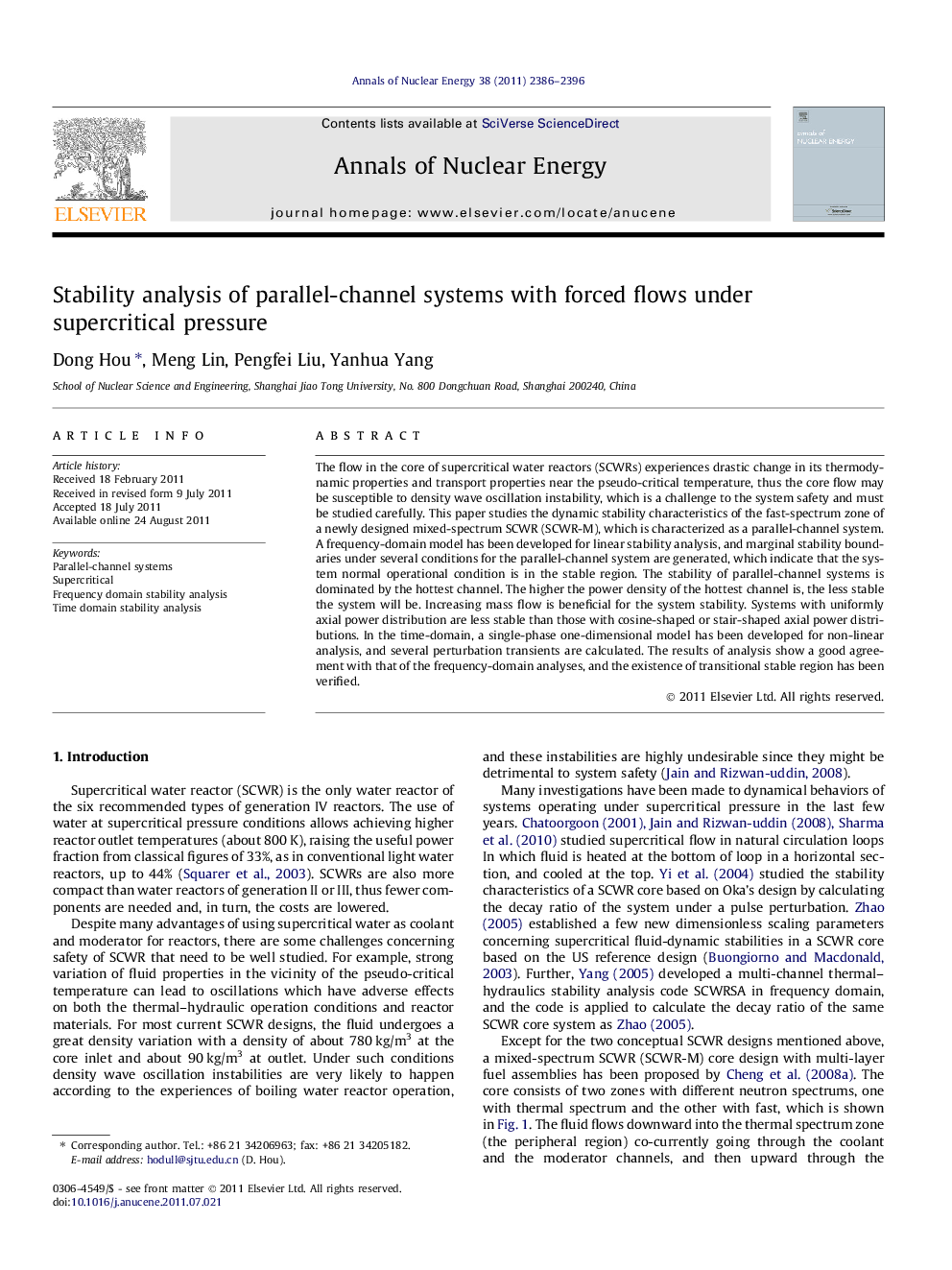| Article ID | Journal | Published Year | Pages | File Type |
|---|---|---|---|---|
| 1729169 | Annals of Nuclear Energy | 2011 | 11 Pages |
The flow in the core of supercritical water reactors (SCWRs) experiences drastic change in its thermodynamic properties and transport properties near the pseudo-critical temperature, thus the core flow may be susceptible to density wave oscillation instability, which is a challenge to the system safety and must be studied carefully. This paper studies the dynamic stability characteristics of the fast-spectrum zone of a newly designed mixed-spectrum SCWR (SCWR-M), which is characterized as a parallel-channel system. A frequency-domain model has been developed for linear stability analysis, and marginal stability boundaries under several conditions for the parallel-channel system are generated, which indicate that the system normal operational condition is in the stable region. The stability of parallel-channel systems is dominated by the hottest channel. The higher the power density of the hottest channel is, the less stable the system will be. Increasing mass flow is beneficial for the system stability. Systems with uniformly axial power distribution are less stable than those with cosine-shaped or stair-shaped axial power distributions. In the time-domain, a single-phase one-dimensional model has been developed for non-linear analysis, and several perturbation transients are calculated. The results of analysis show a good agreement with that of the frequency-domain analyses, and the existence of transitional stable region has been verified.
► A frequency-domain model for supercritical flow stability analysis was developed. ► The marginal stability boundaries for parallel-channel system were constructed. ► The sensitivities of several parameters were studied for system stability boundary. ► A time-domain model was developed and applied to nonlinear stability analysis.
